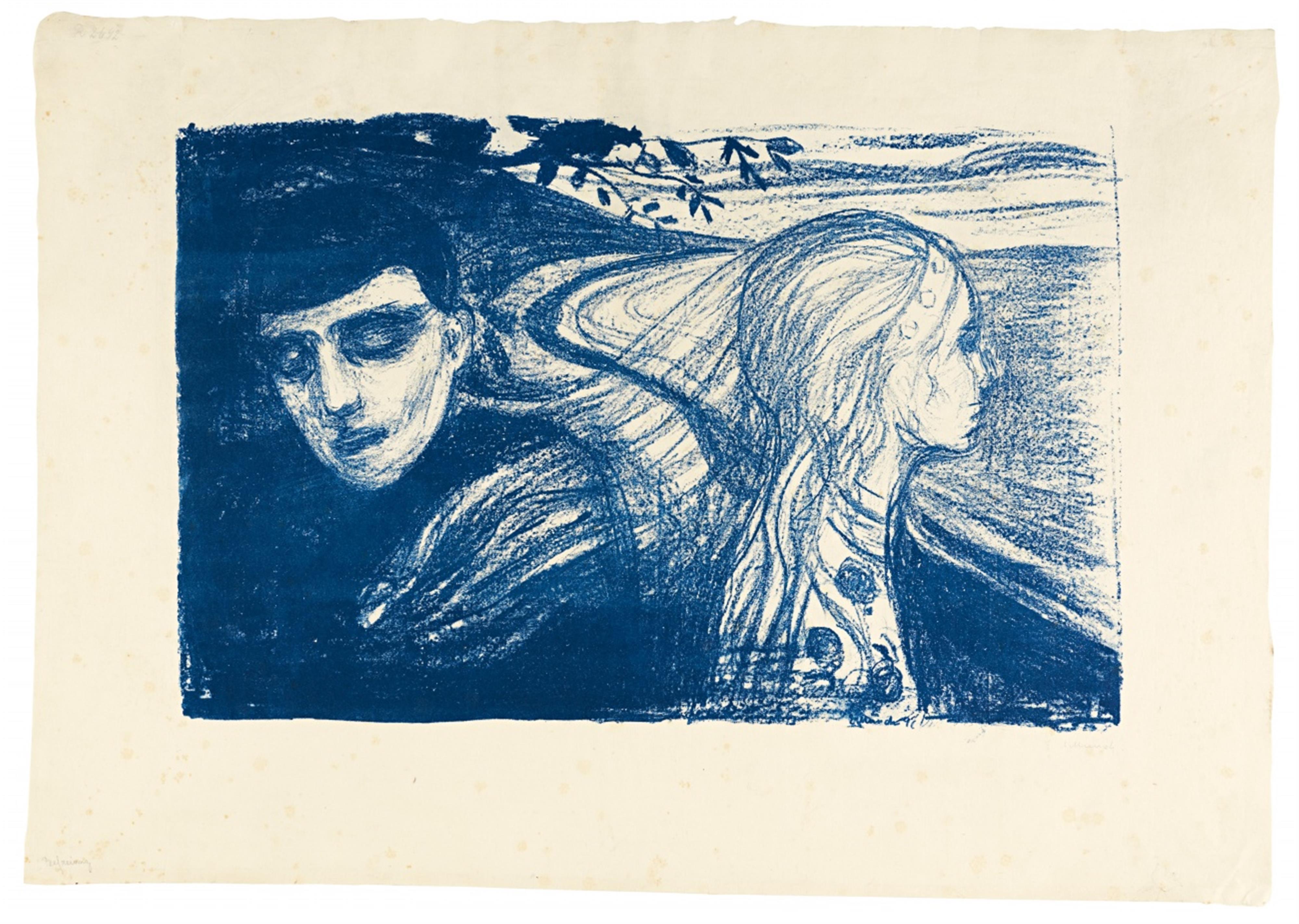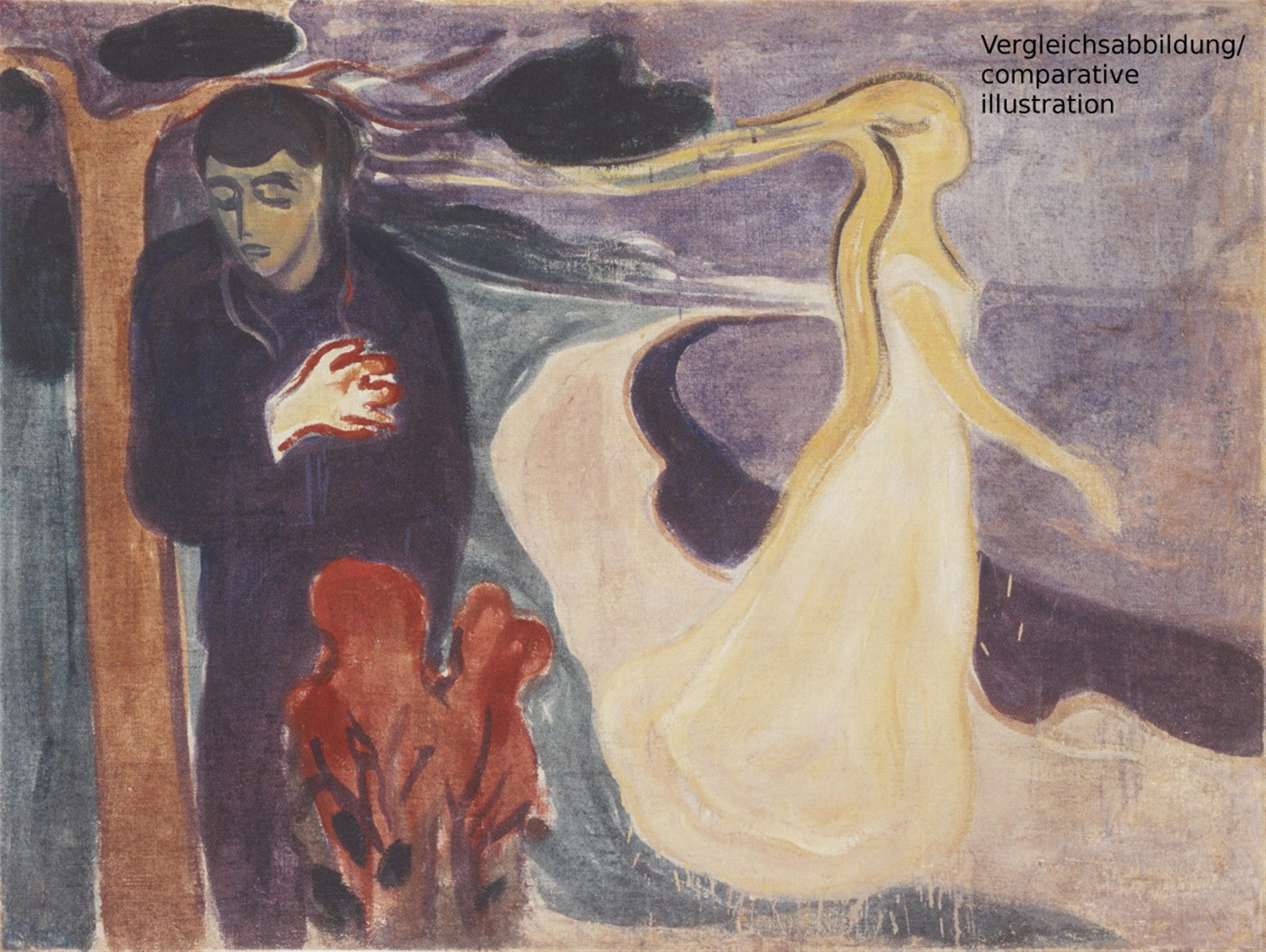Edvard Munch
Loslösung II (Separation II)
1896
Lithograph on fine Japan laid paper 41.5 x 64.2 cm (59.3 x 84.3 cm) Signed 'E Munch' in pencil lower right. Inscribed "Befreiung" in an unknwon hand in pencil lower left and numbered "R 2692" upper left. According to Ute Kuhlemann Frank this proof could be an impression by M.W. Lasally, Berlin, who printed for Munch around 1906; the numbering on the sheet possibly may be the printer's annotation. - Minor foxing.
The present large-format sheet is part of an extensive group of prints that Munch created during his stay in Paris from 1896 to 1897. In these works, he intensively explores fundamental aspects of life: fear, death and, above all, the coming and passing of love. In addition to “Separation II”, he thus created the lithographs “Attraction I and II”, “The Flower of Love”, “On the Waves of Love”, “Jealousy I and II” and “Separation I” in this period (Woll 75, 76, 80, 81, 68, 69 and 77). These were first shown in 1896 at Samuel Bing's “Salon de l'Art Nouveau” in Paris. Along with these early impressions by Auguste Clot, Woll also mentions additional later printings by M.W. Lassally in Berlin (approx. from 1906) and A.P. Nielsen in Norway.
In his painting Munch had already been occupying himself with these existential themes since the early 1890s. They would later become famous in the form of a series of interrelated paintings for which Munch selected the title “Frieze of Life”. This also includes the painting “Separation”, which was likewise created in 1896. It features a motif closely related to that of our lithograph and is now in Oslo's Munch Museum (cf. Woll Paintings 393, see comparative illus.).
In the lithograph “Separation II”, Munch emphatically captures the moment of a pair of lovers parting: a woman in light-coloured clothing looks out at the open sea from the seashore and, in doing so, turns away from a darkly dressed man looking at the ground. As the last element still linking her to the man, the woman's long hair takes on a central significance here. Regarding this motif, which Munch utilised multiple times, the artist once stated: “I felt as though there were invisible threads between us - I felt like invisible threads of her hair were still wrapped around me - and thus when she completely disappeared across the sea - I still felt them, it hurt in the place where my heart was bleeding - because the threads could not be broken.” (cited in: Edvard Munch. Liebe, Angst, Tod, exhib. cat. Bielefeld/Krefeld/Kaiserslautern 1980/1981, p. 91)
The dramatic chiaroscuro clarifies this forceful message: while the woman sets out for new shores in high spirits and with her head high, the man remains behind - stranded and with a broken heart. The intensity of this emotionally charged work is further heightened by the dark blue of the print.
Catalogue Raisonné
Woll 78 I; Schiefler 68a
Certificate
We would like to thank Ute Kuhlemann Falck, Munch Museum Oslo, for additional information.
Provenance
Private possession, Hesse




